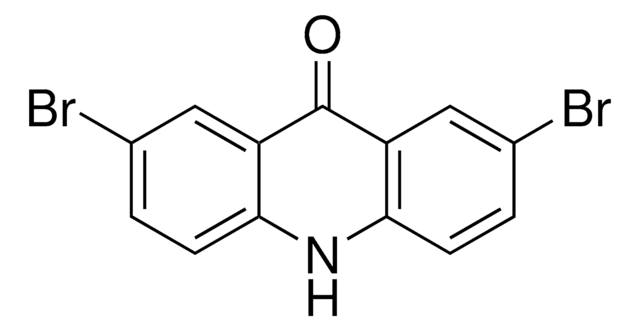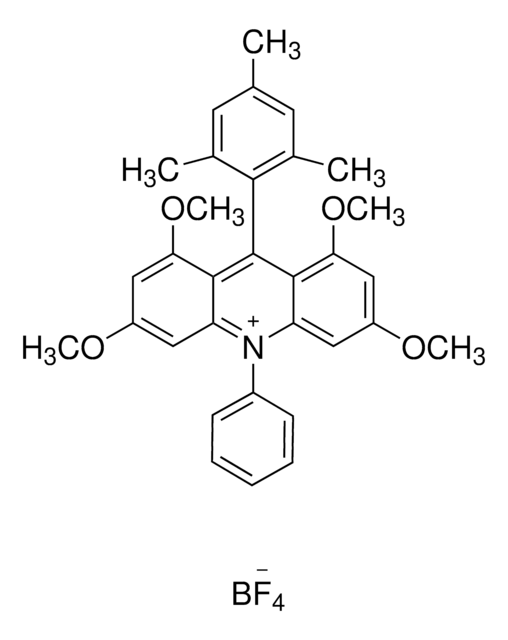901111
Phenox O-PC™ A0202
New Iridium, ≥97%
Synonym(s):
3,7-Di([1,1′-biphenyl]-4-yl)-10-(naphthalen-1-yl)-10H-phenoxazine, Miyake organophotoredox catalyst, 3,7-Di(4-biphenyl) 1-naphthalene-10-phenoxazine, PhenO_1Naph_Biph
About This Item
Recommended Products
Quality Level
Assay
≥97%
form
powder or crystals
reaction suitability
reagent type: catalyst
reaction type: Photocatalysis
mp
171 °C
photocatalyst activation
400 nm
SMILES string
C1(C=CC(C2=CC=C(C3=CC=CC=C3)C=C2)=C4)=C4OC(C=C(C5=CC=C(C6=CC=CC=C6)C=C5)C=C7)=C7N1C8=C(C=CC=C9)C9=CC=C8
Application
Product can be used with our line of photoreactors: Including Penn PhD (Z744035) & SynLED 2.0 (Z744080)
Other Notes
Organocatalyzed Atom Transfer Radical Polymerization Driven by Visible Light
Organocatalyzed Atom Transfer Radical Polymerization Using N-Aryl Phenoxazines as Photoredox Catalysts
Intramolecular Charge Transfer and Ion Pairing in N,N-Diaryl Dihydrophenazine Photoredox Catalysts for Efficient Organocatalyzed Atom Transfer Radical Polymerization
Legal Information
related product
Storage Class Code
11 - Combustible Solids
WGK
WGK 3
Flash Point(F)
Not applicable
Flash Point(C)
Not applicable
Choose from one of the most recent versions:
Certificates of Analysis (COA)
Don't see the Right Version?
If you require a particular version, you can look up a specific certificate by the Lot or Batch number.
Already Own This Product?
Find documentation for the products that you have recently purchased in the Document Library.
Customers Also Viewed
Our team of scientists has experience in all areas of research including Life Science, Material Science, Chemical Synthesis, Chromatography, Analytical and many others.
Contact Technical Service



![(Ir[dF(CF3)ppy]2(dtbpy))PF6](/deepweb/assets/sigmaaldrich/product/structures/982/913/02dd8ddd-6deb-40a0-ab9b-07b18f1abb09/640/02dd8ddd-6deb-40a0-ab9b-07b18f1abb09.png)









![Tris[2-phenylpyridinato-C2,N]iridium(III) sublimed grade](/deepweb/assets/sigmaaldrich/product/structures/167/234/658d0b76-d31d-4fd5-8041-e04e207227c9/640/658d0b76-d31d-4fd5-8041-e04e207227c9.png)